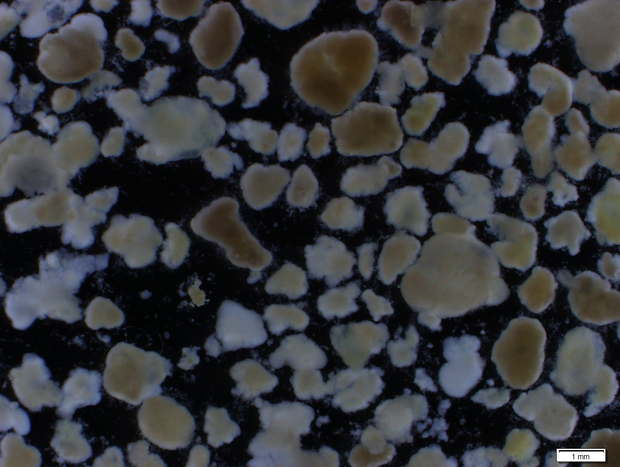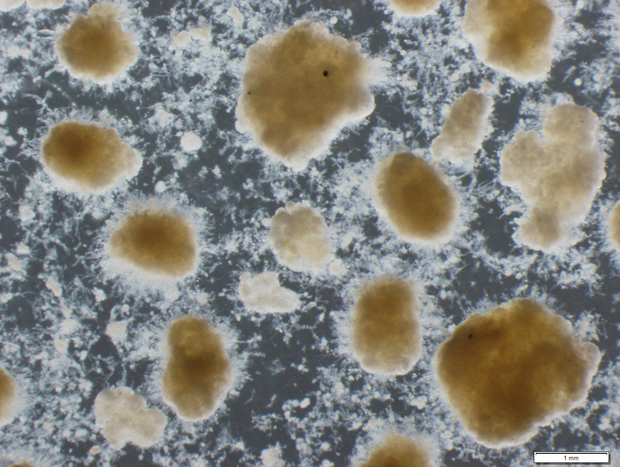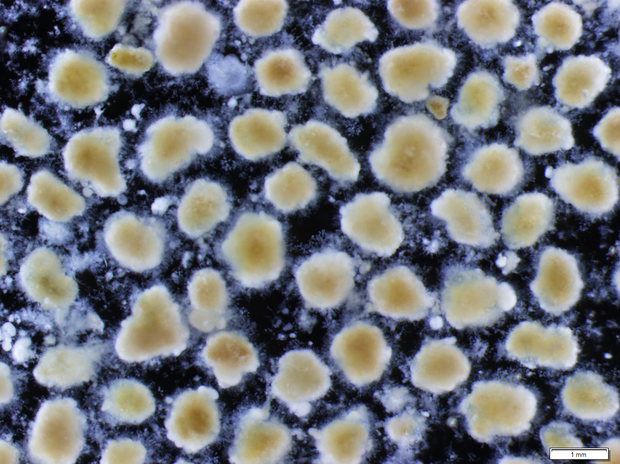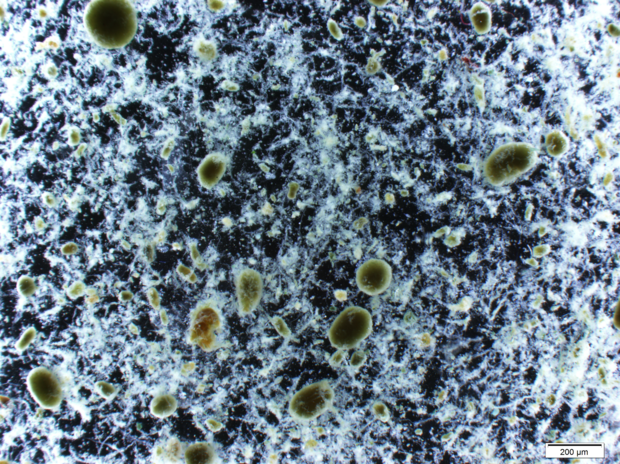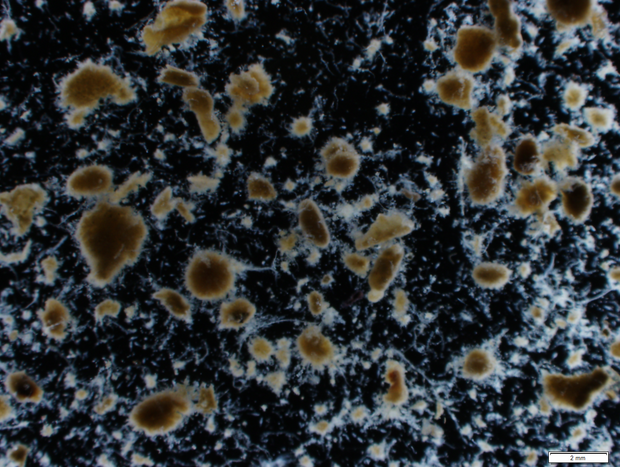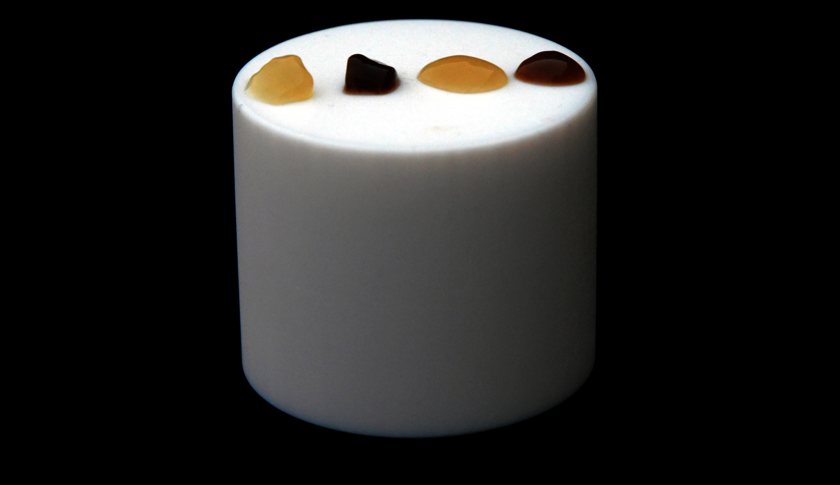Département Technologie des procédés
Aerober granulierter Schlamm
Aerobe granulierte Schlammsysteme (AGS) wurden in den letzten 25 Jahren entwickelt und stellen heute eine wichtige Alternative zu herkömmlichen Belebtschlammsystemen dar. Weltweit sind inzwischen mehr als 70 großtechnische Anlagen in Betrieb oder im Bau, die auf Sequencing Batch Reactors (SBR) basieren und ein breites Spektrum an kommunalen und industriellen Abwässern behandeln. Zu den theoretischen Vorteilen von AGS gehören ein verbessertes Absetzverhalten, eine hohe Schwebstoffkonzentration und die Koexistenz verschiedener Redoxbedingungen in den Granulen, was zu erheblichen Einsparungen bei Energie, Platzbedarf und Chemikalien führt. Unsere Forschung zielt hauptsächlich darauf ab, unser Verständnis der Bildung von Granulen während der Behandlung von kommunalem Abwasser zu verbessern und die Leistungen von AGS-Systemen im Vergleich zu anderen biologischen Behandlungsverfahren kritisch zu bewerten.
Forschung zur Bildung von Granulen
Unsere Forschung zielt darauf ab, unser grundlegendes Verständnis der Granulatbildung zu verbessern mit folgenden Schwerpunkten:
- den Zusammenhang zwischen der Zusammensetzung des Zulaufs in Bezug auf niedermolekulare, organische Säuren und partikuläres organisches Substrat, der Granulierung und den daraus resultierenden Granulat-Eigenschaften (Größe, Granulatanteil, Festigkeit) und letztlich der Leistung von AGS-Systemen
- das Schicksal der organischen Substrate während des SBR-Betriebs (Lagerung, Fermentation, Hydrolyse, anoxische oder aerobe Oxidation) und ihre Auswirkungen auf die Stickstoffentfernung (simulierte Nitrifikation-Denitrifikation und Gesamtstickstoffentfernung)
- die Rolle der "Flocken" (Partikel kleiner als 250 µm) in AGS-Systeme
- die Treibhausgasemissionen von AGS-Systemen, z. B. die N2O-Emissionen
Aerobe granulierte Schlämme in der Praxis
Die Eawag war und ist an mehreren Studien im Pilot- und Grossmassstab mit nationalen und internationalen Industriepartnern beteiligt:
- Pilotstudie der Nereda technology auf der Kläranlage Kloten-Opfikon, CH, in Zusammenarbeit mit Wabag und DHV RoyalHaskoning.
- Pilotstude der Nereda technology am Kompetenzzentrum Wasser Berlin.
- Studie im Vollmassstab in der Kläranlage Sarnerataal Alpnach.
Modellierung von AGS-Systemen
Die Eawag hat ein neues Modell von AGS-Systemen entwickelt, um das Verständnis dieser Systeme zu verbessern und Ingenieure bei der Auslegung, Fehlererkennung und Optimierung zu unterstützen. Bitte besuchen Sie die Projektseite des Eawag Complex AGS Modells: https://www.eawag.ch/en/department/eng/projects/abwasser/ags-aerobic-granular-slugde-model/ .
Rückgewinnung von Ressourcen aus granuliertem Schlamm
Alginat-ähnliche Exopolymere sind eine Mischung von Biopolymeren, die aus der Matrix extrazellulärer polymerer Substanzen (EPS) von Bakterienaggregaten wie AGS gewonnen werden. EPS können dann zur Bildung von Hydrogelen verwendet werden, die für die Rückgewinnung von Phosphor weiterverwendet werden können. Ein Teil unserer Forschung zielt darauf ab, zu bewerten, inwieweit EPS aus AGS zurückgewonnen und für die Rückgewinnung von Phosphor weiterverwendet werden kann.
Publications
Alumni
- Manuel Layer (PhD student, 2016-2020)
- Cassio Moraes Schambeck (PhD student in co-supervision, 2016-2020)
- Matthias Staehle (Master student, 2020)
- Mercedes Garcia Villodres (Master student and then research assistant, 2017-2018)
- Mengjiao Xing (Master student, 2018)
- Kristina Bock (Master student, 2018)
- Jamile Wagner (PhD student in co-supervision, 2012-2016)
- Antonio Hernandez (Master student, 2017)
- Eva Reynaert (Master student, 2017)
- Michael Cunningham (Master student, 2015)
- Ueli Thalmann-Müller (Master student, 2013)



